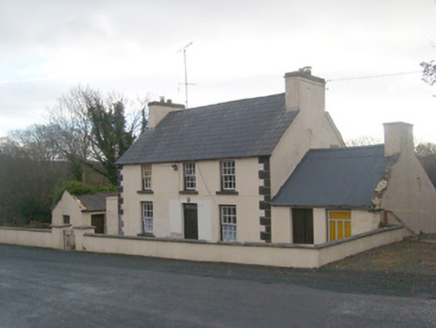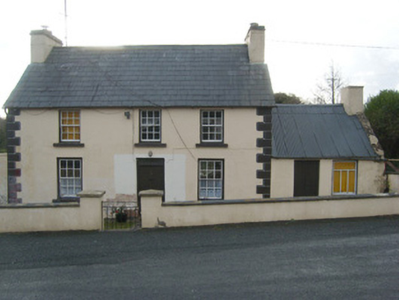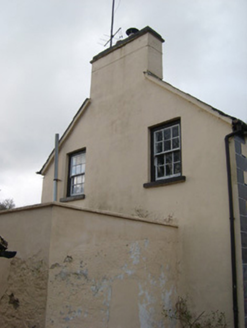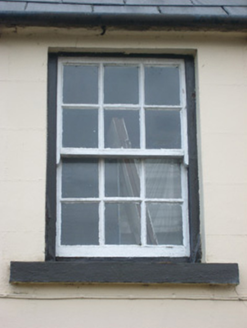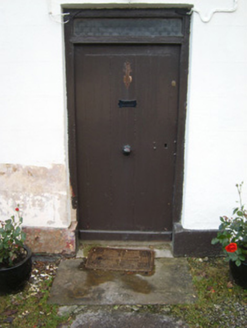Survey Data
Reg No
40909226
Rating
Regional
Categories of Special Interest
Architectural
Original Use
House
In Use As
House
Date
1800 - 1840
Coordinates
182871, 378313
Date Recorded
12/10/2007
Date Updated
--/--/--
Description
Detached three-bay two-storey house, built c. 1820, having two-bay single-storey extension attached to the west gable end and with single-bay single-storey flat-roofed addition attached to the east gable end. Pitched natural slate roof having projecting eaves course, and with rendered chimneystacks to the gable ends (east and west). Pitched corrugated-metal roof to single-storey extension to the west having raised rendered verge and rendered chimneystack to the west gable end. Smooth rendered ruled-and-lined walls. Square-headed window openings with stone sills and six-over-six pane horned timber sliding sash windows. Replacement timber casement windows to rear (south). Square-headed door opening, offset slightly to the west side of centre, having battened timber door, plinth blocks to base, and with small overlight. Set slightly back from road in own grounds to the east of Inver and to the west/north-west of Mountcharles. Single-storey gable-fronted outbuilding adjacent to the east of house. Small yard to the north of house with yard and garden to the rear (south). Bounded on road-frontage to the north by rendered boundary wall. Pedestrian gateway serving doorway comprising a pair of rendered gate piers (on square-plan) having metal gate.
Appraisal
This simple but appealing two-storey vernacular house, of early-to-mid nineteenth-century appearance retains much of its early character and form. Its visual expression is enhanced by the retention of much of its salient fabric including natural slate roof and timber sliding sash windows. The irregular layout of the windows to the main elevation creates an appealing vernacular appearance that adds to the appeal. Buildings of this type were, until recently, a ubiquitous feature of small Irish towns and the rural Irish countryside. However, it is now sadly becoming increasingly rare to find relatively unaltered examples such as this unassuming building at Cranny Lower, Inver, which makes this building a valuable example of its type and date. Situated in a prominent location adjacent to a main road, this building makes a positive contribution to the roadscape and is an integral element of the built heritage of the Inver area.
